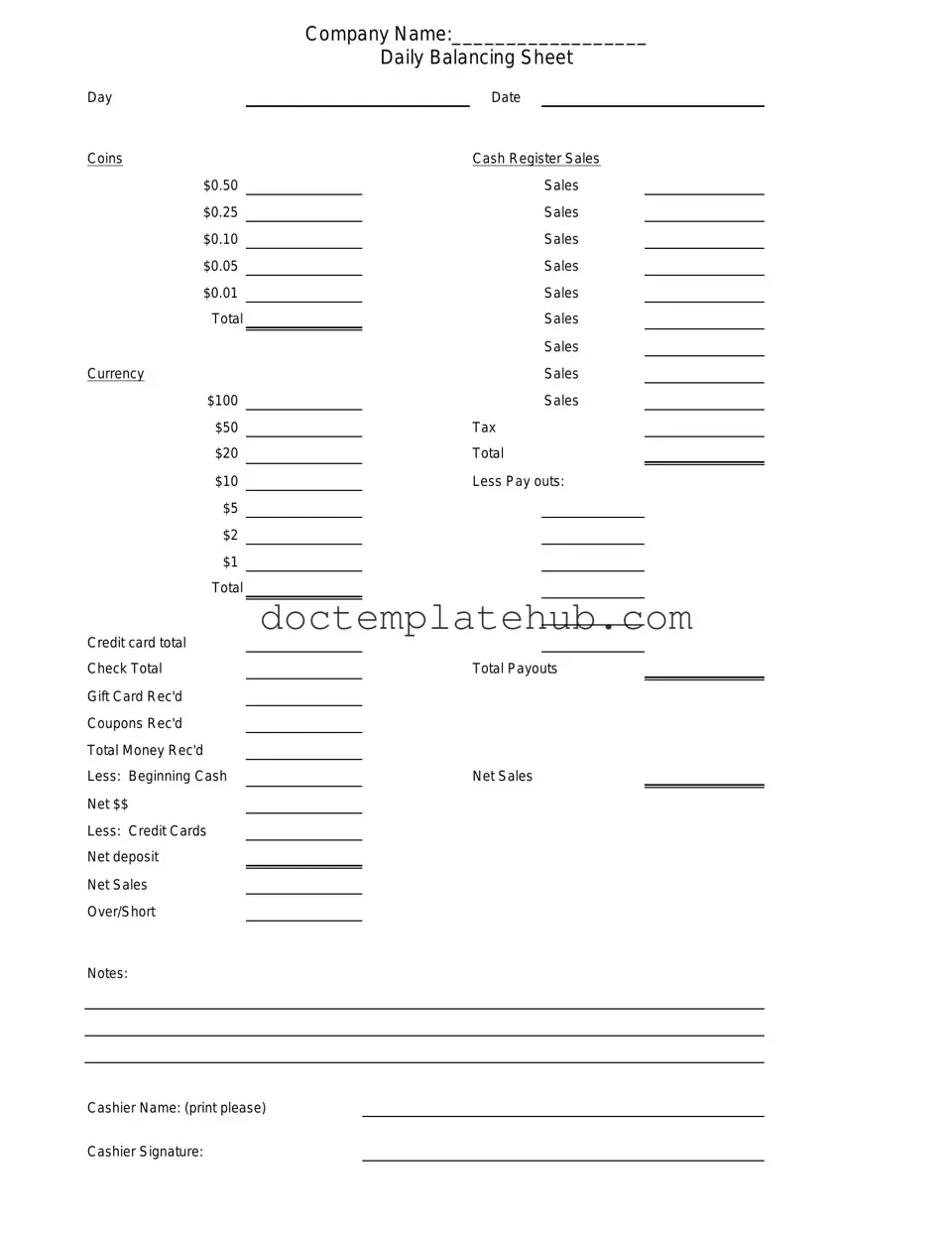What is a Cash Drawer Count Sheet?
The Cash Drawer Count Sheet is a tool used by businesses to track the cash in their cash drawers at the end of a shift or business day. It helps ensure that the amount of cash on hand matches the sales recorded, allowing for accurate financial reporting and identifying any discrepancies.
Why is it important to use a Cash Drawer Count Sheet?
Using a Cash Drawer Count Sheet is crucial for maintaining financial integrity. It helps prevent theft and errors by providing a clear record of cash transactions. Regularly counting cash and documenting it can also help identify trends in sales and cash flow, aiding in better business decisions.
How do I fill out a Cash Drawer Count Sheet?
To fill out a Cash Drawer Count Sheet, start by recording the date and your name or the name of the person responsible for the cash drawer. Next, count the cash in each denomination (bills and coins) and write down the amounts in the designated sections. Finally, total the amounts and compare them to the expected cash based on sales records.
What should I do if the cash counted does not match the expected amount?
If the cash counted does not match the expected amount, it’s important to investigate the discrepancy. Double-check your counts and review sales records for any errors. If you still find a difference, report it to your supervisor or manager for further action. Documenting any discrepancies is essential for accountability.
How often should I complete a Cash Drawer Count Sheet?
Ideally, a Cash Drawer Count Sheet should be completed at the end of every shift or business day. This frequency helps maintain accurate records and allows for immediate identification of any issues. Some businesses may choose to do additional counts during the day, especially in high-traffic environments.
Can I use a digital version of the Cash Drawer Count Sheet?
Yes, many businesses are moving towards digital solutions for cash management. Digital Cash Drawer Count Sheets can offer advantages such as easier data storage, automatic calculations, and enhanced reporting features. However, ensure that any digital system you use is secure and compliant with financial regulations.
What happens if I lose a Cash Drawer Count Sheet?
If a Cash Drawer Count Sheet is lost, it’s important to recreate the information as best as possible. Review sales records, and if necessary, conduct a new cash count. Document the loss and any actions taken to recreate the information. This record-keeping is essential for maintaining transparency and accountability.
Is there a standard format for a Cash Drawer Count Sheet?
While there is no universally mandated format, many Cash Drawer Count Sheets include sections for the date, employee name, cash denominations, total cash counted, and a space for notes. Businesses can customize their sheets to fit their specific needs, but it’s important to ensure that all necessary information is captured for accurate record-keeping.
